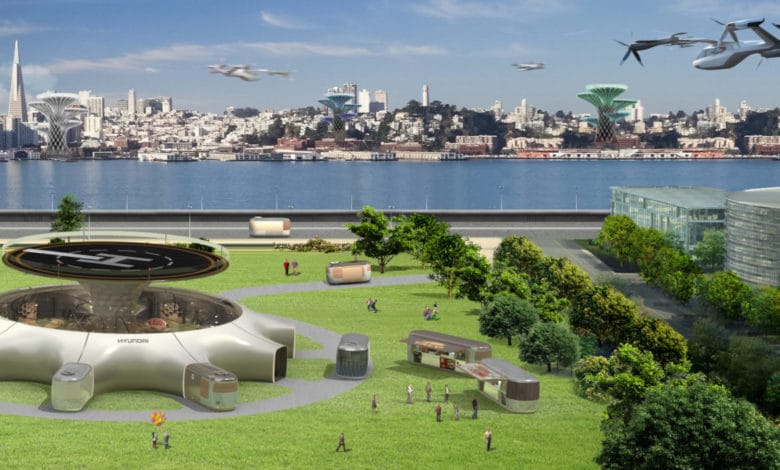
In cooperation with Uber, Hyundai developed an air taxi. The Personal Air Vehicle has now been presented at this year’s CES in Las Vegas. But that’s not all: Hyundai also presented a kind of utopian concept in which the air taxis could be used.
Mix of drone and small aircraft
The air taxi presents itself as a mixture of drone and small aircraft. It is equipped with both rotors and propellers, as it is intended to take off vertically. Inside it offers space for four passengers and one pilot. However, human control is explicitly designed only as a temporary solution: as soon as technology allows, the flight taxis are to fly autonomously. As soon as the technology allows, the air taxi will fly autonomously. The air taxi will be operated entirely electrically and is therefore probably more environmentally friendly than today’s standard aircraft.
As soon as the mini airplane has taken off, for which purpose the propellers can be folded up and used as additional rotors, it flies at an altitude of 300 to 600 meters. The maximum distance that can be covered per battery charge should be 100 kilometres. However, the aircraft is designed for short-haul flights – in cooperation with Uber, it is to be used for occasional flights within individual agglomerations. It can reach speeds of up to 290 kilometres per hour.
The device is to be charged while passengers are boarding and alighting. According to Hyundai, the short charging cycles should be sufficient for all-day operation.
Concept as science fiction utopia ?
The further concept that Hyundai presented together with the air taxi is strongly reminiscent of science fiction utopias. Thus, later on, the air taxis are not only supposed to transport people from A to B, but also serve as purpose built vehicles i.e. roughly as “purpose-built vehicles”. In concrete terms, this means that the air taxis will not only serve as a means of transport, but will also contribute to the infrastructure of the city of the future – for example by accommodating restaurants or medical facilities. A gigantic infrastructure is also to be created below the take-off and landing area of the aircraft, which is to be coordinated with the infrastructure accommodating the respective aircraft. The hubs are therefore not designed as railway stations, but as centres of social life in the broader sense.
The concept, which was probably deliberately conceived far away from today’s reality of life, is illustrated by a video showing the intended purposes and the city of the utopia located in the desired future.



